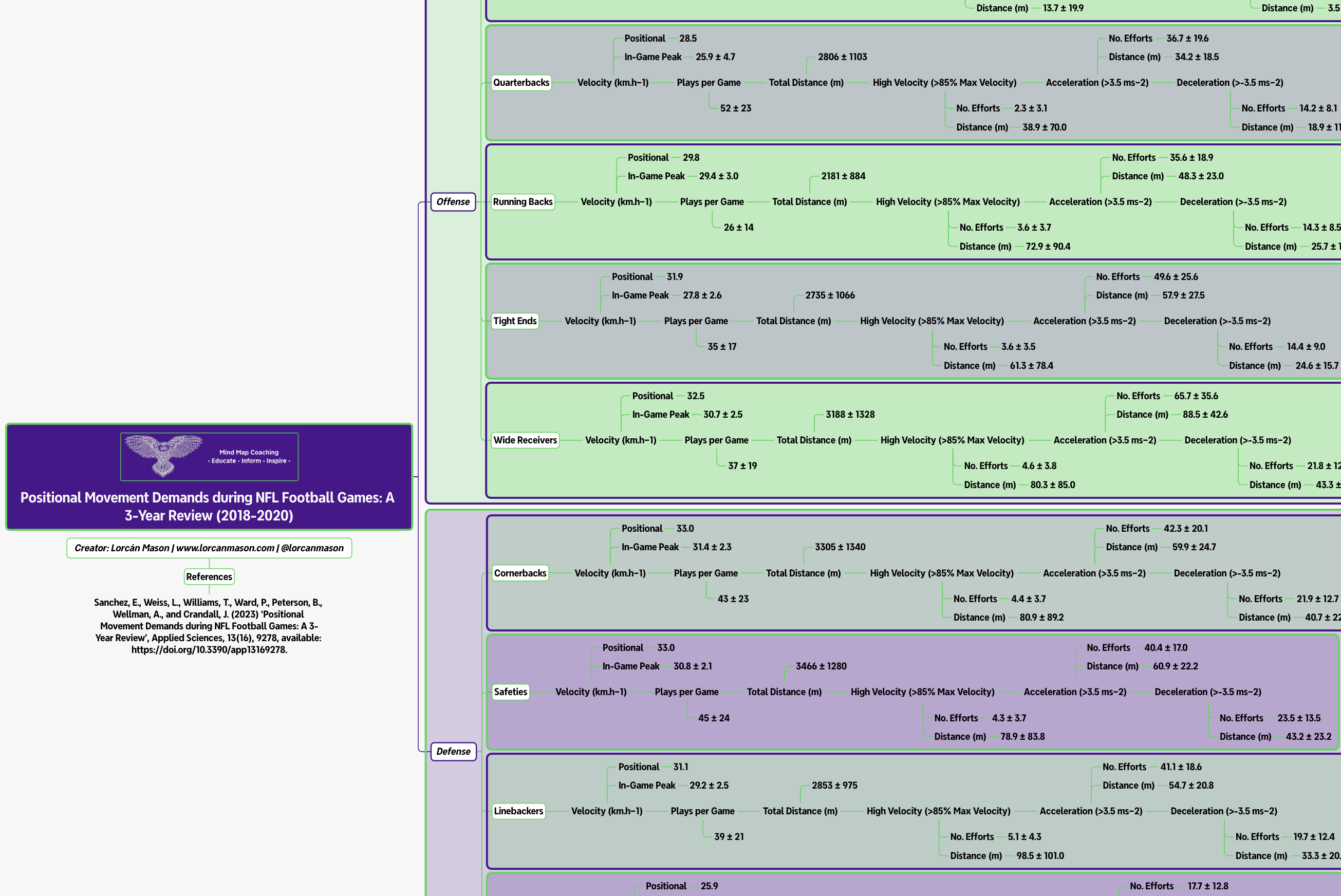Positional Movement Demands during NFL Football Games: A 3-Year Review.
American football is a collision sport played on a field and is known for its high intensity multi-directional movements and repeated high-velocity sprints interspersed with periods of rest.

American football is a collision sport played on a field and is known for its high intensity multi-directional movements and repeated high-velocity sprints interspersed with periods of rest. The sport's unique combination of high-intensity accelerations, decelerations, rapid running, and physical collisions resulting from blocking and tackling increases the likelihood of injuries among American football players when compared to other team sports. In the National Football League (NFL), a significant 60% of all injuries occur in the lower extremities, leading to a substantial number of missed player-days. Therefore, the prevention and treatment of lower extremity injuries are crucial for medical and performance staff who strive to maximize player availability and performance on the field. While lower extremity injuries often have multiple contributing factors, research indicates a correlation between player workloads and soft tissue injuries in American football.
Wide receivers (WR) covered the most distance during games, while offensive and defensive linemen (OL and DL) traveled the least. Defensive backs (DBs) also exhibited high distances, particularly safeties (S) and cornerbacks (CB). Maximum velocities varied significantly, with CBs, Ss, and WRs achieving the highest speeds, while OLs had the lowest. The study also found that linebackers (LBs) had the most high-velocity efforts, while OLs had the fewest. Acceleration and deceleration efforts were also analyzed, revealing that WRs performed the most acceleration efforts, while Ss had the highest deceleration efforts. Overall, WRs and DBs exhibit the highest running volumes and maximum velocities while in contrast, linemen showed the least activity, reflecting their roles in blocking and tackling rather than running.
In conclusion, a comprehensive understanding of the specific demands placed on players based on their positions can be instrumental in designing tailored training programs to adequately prepare athletes for the rigors of competition and potentially reduce the risk of injury. Moreover, gaining insights into the specific demands of competition can enhance the development of position-specific training regimens aimed at optimizing on-field performance and overall player effectiveness.
Reference
Sanchez, E., Weiss, L., Williams, T., Ward, P., Peterson, B., Wellman, A., and Crandall, J. (2023) ‘Positional Movement Demands during NFL Football Games: A 3-Year Review’, Applied Sciences, 13(16), 9278, available: https://doi.org/10.3390/app13169278.

